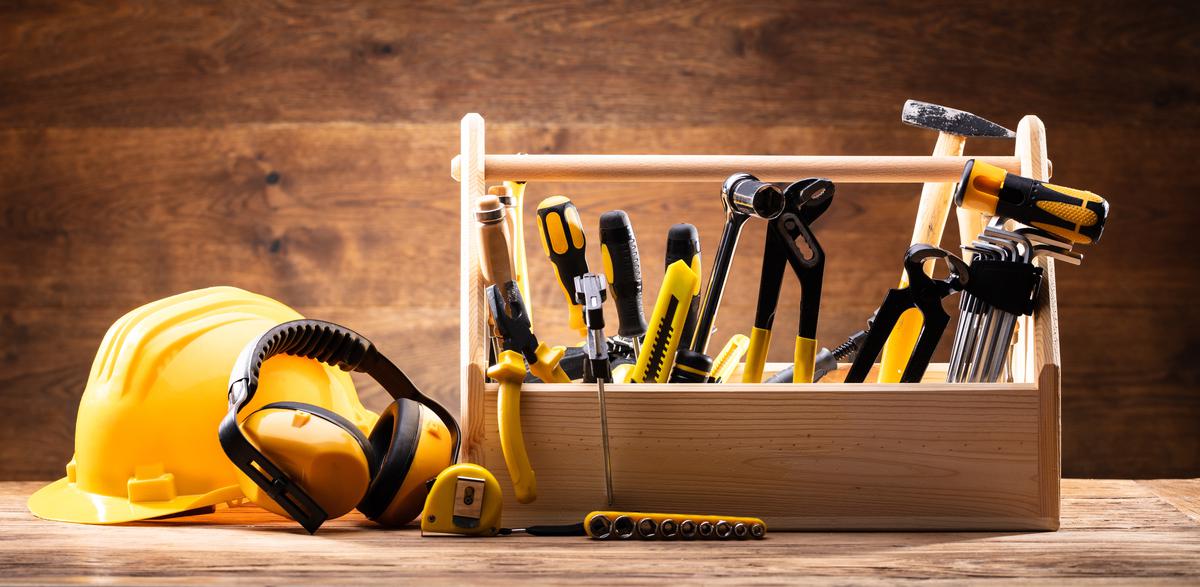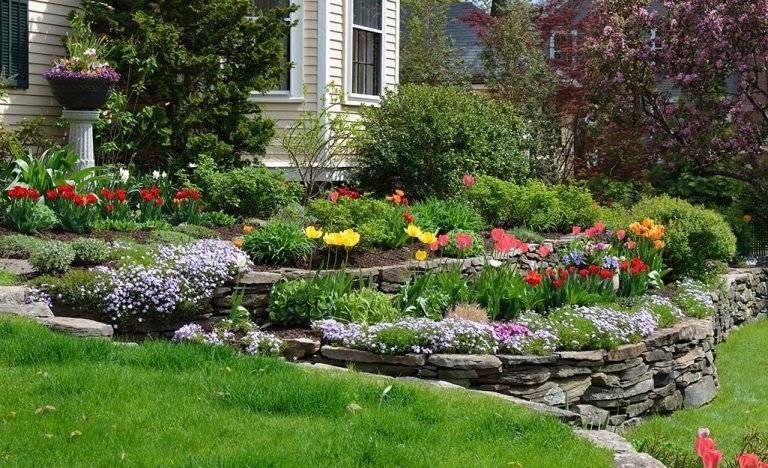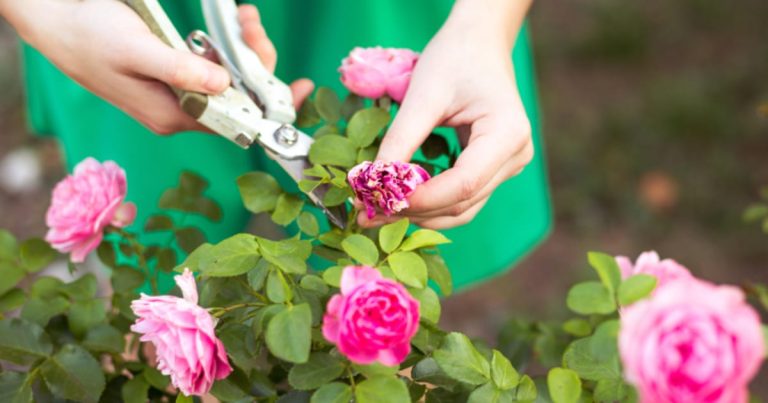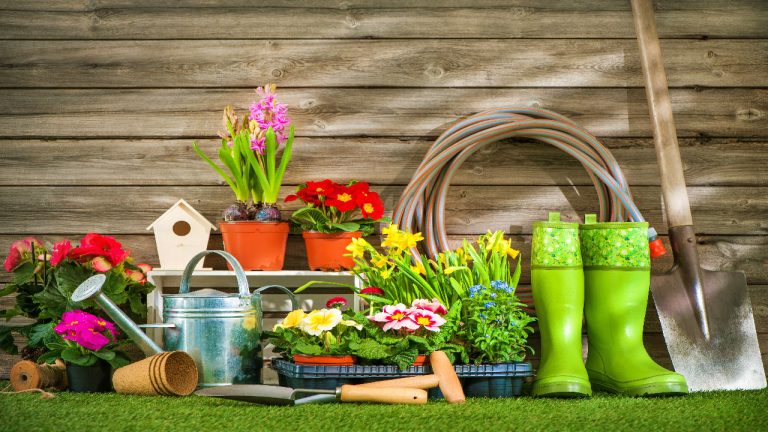
The exterior of your home is more than just a boundary separating your private space from the outside world. It’s an opportunity to create a lasting impression, enhance curb appeal, and expand your living area. Landscaping is one of the most effective ways to transform the environment around your home, but to achieve truly impressive results, the right tools and techniques are essential. Whether you’re a seasoned DIY enthusiast or a novice looking to dip your toes into the world of home improvement, the combination of good tools and thoughtful landscaping practices can elevate your property in ways that not only add beauty but also increase functionality, value, and even personal satisfaction.
1. Start with a Vision: Planning and Design
The first step to any successful landscaping project is thoughtful planning. Before you reach for a single tool, take the time to survey your yard and envision what you want to achieve. Are you looking for a serene outdoor retreat, a functional space for entertaining, or a garden that bursts with color? Your goals will dictate the style and scope of your landscaping work.
Begin by sketching a rough design of your property, noting any existing features such as trees, pathways, or structures that you wish to keep. Pay attention to the layout of sunlight and shade, as this will help you determine where to plant specific flowers or shrubs. Consider the size of your space and how much time you can dedicate to maintaining your landscape. For instance, if you have a busy schedule, you may want to focus on low-maintenance plants and landscaping solutions that don’t require constant care.
Additionally, incorporating sustainable practices into your landscaping plan can have long-term benefits for both your home and the environment. Choose native plants that thrive in your climate and are resistant to pests, diseases, and extreme weather. This not only reduces the need for fertilizers and pesticides but also supports local wildlife by providing food and shelter.
2. Essential Tools for Landscaping Success
Once you’ve mapped out your vision, it’s time to gather the right tools to make your ideas a reality. The right equipment can make landscaping tasks easier, more efficient, and ultimately more enjoyable. Here’s a list of essential tools for any homeowner looking to improve their exterior through landscaping:
-
Shovel and Spade: A high-quality shovel is indispensable for digging holes, planting, and moving soil. A spade, with its flat edge, is particularly useful for edging beds and cutting through sod.
-
Pruning Shears and Hedge Trimmers: To keep your shrubs, hedges, and trees neat and well-groomed, investing in a good pair of pruning shears is crucial. Hedge trimmers, either manual or electric, will help you shape larger plants and maintain clean lines.
-
Rake and Leaf Blower: A rake is essential for gathering fallen leaves and debris, particularly in the autumn months. A leaf blower, on the other hand, can help you quickly clear leaves from hard-to-reach corners or large areas like lawns and driveways.
-
Lawn Mower: Regular mowing is vital for maintaining a lush and healthy lawn. Choose a mower suited to your yard size—whether it’s a push mower for smaller spaces or a riding mower for larger properties. For more precise work, consider a string trimmer to tackle the edges and areas around fences or flower beds.
-
Wheelbarrow: For transporting soil, mulch, plants, and tools, a sturdy wheelbarrow is an indispensable asset. It can also be used for removing debris or relocating large items within your yard.
-
Garden Hose and Sprinkler System: Irrigation is crucial for plant health. A reliable garden hose is a staple for any garden, but for more extensive landscaping, a sprinkler system or drip irrigation setup can save you time and water, ensuring your plants are efficiently watered.
3. Landscaping Ideas to Enhance Your Home’s Appeal
Once you have the right tools, it’s time to roll up your sleeves and start improving your landscape. Here are several ideas that can transform your outdoor space and increase the aesthetic and functional value of your home:
-
Create Inviting Pathways: Walkways and garden paths provide structure to your landscape while guiding visitors through your property. Use materials like stone, gravel, or brick to create a timeless, welcoming feel. These paths can be functional as well as visually appealing, connecting key areas of your garden, such as seating areas, flower beds, or your front entrance.
-
Add Layers of Greenery with Flower Beds and Shrubs: Layered planting adds depth and texture to your landscape. Place taller plants and shrubs towards the back of flower beds, with shorter plants and flowers in the foreground. This strategy creates a natural, balanced look that is visually interesting and dynamic throughout the seasons. Flowers like tulips, daffodils, and peonies provide a burst of color in spring, while lavender and hydrangeas bloom in summer.
-
Incorporate Hardscaping: Hardscaping involves the use of non-plant materials, such as patios, retaining walls, or water features. A well-designed patio provides a beautiful and functional outdoor living space, perfect for dining or relaxing. Retaining walls can add dimension to sloping yards, helping to prevent erosion while creating usable space for gardens or seating areas. Water features, like fountains or ponds, add tranquility to your yard and attract wildlife, creating a soothing environment.
-
Create a Focal Point: Every landscape benefits from a focal point that draws the eye. This could be a striking tree, a piece of garden art, or even a sculptural element like a statue or birdbath. By placing a focal point in a prominent position, you help guide visitors’ attention and create a sense of balance and harmony in your garden.
-
Add Lighting for Ambience: Outdoor lighting can dramatically change the mood of your garden, making it both functional and enchanting at night. Path lights, string lights, or spotlights focused on trees and plants will highlight the beauty of your landscaping and create a cozy, welcoming atmosphere.
4. Sustainability and Low-Maintenance Landscaping
Incorporating sustainable landscaping practices not only benefits the environment but also reduces the amount of time and money you need to invest in your garden. Consider the following strategies for low-maintenance, eco-friendly landscaping:
-
Mulching: Adding a layer of mulch around plants helps retain moisture, suppress weeds, and regulate soil temperature. Organic mulches, such as wood chips or leaves, also improve soil quality as they decompose over time.
-
Xeriscaping: If you live in a dry climate or want to reduce water consumption, xeriscaping focuses on using drought-resistant plants and minimizing the need for irrigation. Choose native plants that are adapted to local climate conditions, ensuring they require less water and maintenance.
-
Rain Gardens: A rain garden can help manage runoff while providing a habitat for pollinators and other beneficial creatures. These gardens are typically planted with native species that thrive in wet conditions, capturing rainwater and filtering it back into the ground.
5. Ongoing Care and Maintenance
Landscaping is an ongoing process, and maintenance is key to ensuring your outdoor space remains beautiful year-round. Regular tasks like mowing, pruning, weeding, and watering will keep your garden looking pristine. Be mindful of seasonal changes, adjusting your care routine as plants enter different growth cycles.
Also, continue to invest in your garden’s improvement. Add new plants, experiment with different flowers, or redesign an area of the yard that might need a refresh. With the right tools, a thoughtful plan, and consistent care, your home’s landscape can evolve into an outdoor sanctuary that not only enhances your property’s value but also becomes a source of personal pride and enjoyment.
Conclusion
Improving your home with tools and landscaping is an investment that pays off in more ways than one. Not only does a well-designed and maintained landscape elevate the visual appeal of your property, but it also creates a healthier, more enjoyable living space. By investing in the right tools, developing a cohesive plan, and applying sustainable practices, you can create a beautiful, functional outdoor environment that complements your home and enhances your quality of life. Whether you’re tackling a small garden upgrade or embarking on a larger landscaping project, the combination of thoughtful design and the right tools will help you create an outdoor space you’ll love for years to come.





